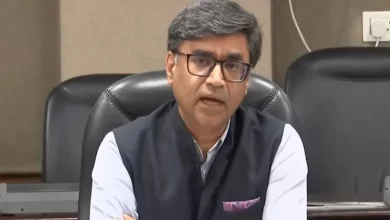Global temperatures likely to breach 1.5 degrees Celsius limit for the first time in next 5 years: WMO

The 1.5 degrees Celsius temperature threshold was all set to be breached, at least temporarily, in the next five years, the World Meteorological Organisation said in a new analysis on Wednesday. It said there was a 66 per cent chance that global temperatures in at least one of the years between 2023 and 2027 would exceed the pre-industrial average by 1.5 degrees Celsius or more.
Also, it was nearly certain — a 98 per cent probability — that one of these years would turn out to be the warmest year on record, surpassing 2016. Right now, 2016 happens to be the warmest year ever, the annual mean temperature that year being 1.28 degrees Celsius higher than the pre-industrial times (average of the 1850-1900 period). The year 2022 was 1.15 degrees Celsius warmer than pre-industrial average.
Separately, a new study released on Wednesday, said the strong spell of heat wave experienced in India, and some neighbouring countries, in April could most likely be attributed to climate change. A group of researchers associated with the World Weather Attribution initiative released a report that said that climate change had made the April heat wave in India, Bangladesh, Laos and Thailand at least 30 times more likely. Events like this were expected to happen only once in hundred years, but under climate change scenarios they were now likely to occur once every five years, they said.
The WMO said annual mean temperatures in each of the next five years was likely to be 1.1 to 1.8 degrees Celsius higher than pre-industrial averages. And if the warming trends were immediately arrested, the 1.5 degrees Celsius breach could very soon be a permanent affair.
“During the next five years, we estimate (the global average temperatures) to hit 1.5 degrees Celsius above pre-industrial times on a temporary basis. There is so much increase in carbon dioxide and methane concentrations in the atmosphere… that in the next 15-20 years, it (1.5 degrees Celsius rise) will be a permanent feature from which there will be no return to the good old days of the previous century,” WMO secretary general Petteri Taalas said in a news conference from Geneva.
1.5 degrees Celsius temperature rise is considered an important threshold. The goal of the 2015 Paris Agreement is to prevent a 2 degrees Celsius rise in global temperatures from pre-industrial times, while striving to contain it below 1.5 degrees Celsius. But most analysts now agree that the 1.5 degrees Celsius threshold was getting out of reach. The assessments of Intergovernmental Panel on Climate Change (IPCC) also say that a breach of 1.5 degrees threshold was most likely unavoidable and the best case scenario for the world could only be a rapid decarbonisation to pull itself back under that threshold after a few years.
The WMO assessment said that the five-year period between 2023 and 2027 was almost certain to be warmer than the previous five year period between 2018 and 2022. The developing El Nino in the equatorial Pacific Ocean is also expected to play a role in this. Usually, El Nino has the impact of increasing the global temperature in the year after it develops. That means that 2024 could receive an additional warming pressure due to El Nino.
“With respect to the rising temperatures, we are moving in the wrong direction. The negative trends are estimated to continue till the 2060s. Even then, to achieve and return to normal levels , it may take about 1,000 years. This is a threat to agriculture, water resources and the humans,” Taalas said at the news conference.
He said current weather models were still unable to issue specific early warning about the possibilities of extreme events like floods, droughts and heat waves.
“The impact of the extreme events is already visible from the recent heat waves across Europe and China ; drought conditions in the Horn of Africa and floods in Pakistan last year. The current climate models are unable to predict extreme events,” he said.
Latest forecasts suggest that El Nino had over 60 per cent chance of developing in the May-July period. This, Taalas said, was bad news.
“El Niño will combine with human-induced climate change to push global temperatures into uncharted territory,” he said.
According to Dr Leon Hermanson, Meteorological Office scientific expert at WMO, El Niño years have witnessed reduced rainfall over northern Amazon forest regions directly contributing to enhanced forest fires.
The unprecedented rates at which the sea ice is melting and the Arctic warming is disproportionately high, the WMO report noted.
Anjali Marar works at the Raman Research Institute, Bengaluru.







